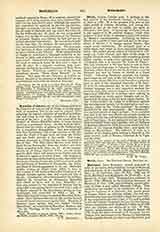

Maratta, CARLO, Italian painter, b. at Camerino, in the March of Ancona, May 13, 1625; d. in Rome, December 15, 1713. From very early years Maratta showed an extraordinary skill in design, and was sent by his patrons to Rome to study under Andrea Sacchi, with whom he remained for many years, and for the rest of his life regarded as his greatest friend and benefactor. After a while he returned to his own part of Italy, and then in 1650, in company with the governor of Ancona, Cardinal Albrizio, who had very much admired his talent, he came again to Rome, and was introduced to Alexander VII, who at once gave him many commissions, and eventually, at the request of Sacchi, the important one for a painting of Constantine destroying the idols for the Baptistery of the Lateran. This was one of his greatest works, and increased his popularity at the Vatican. In 1704 he was knighted by Clement XI, and given the Order of Christ, while in the same year he was created painter in ordinary by Louis XIV of France, who had seen his picture of Daphne and greatly admired it. It was during his residence in Rome that Maratta was styled Maratti by the Romans, and his name is frequently written in that form, although originally it was as we have given it. The painter was a member of the Academy of St. Luke in Rome, and was not only a skillful artist but extremely clever at cleaning and repairing frescoes, and was employed by Clement XI to carry out such work as was necessary for the Raphael frescoes in the Vatican. He was also a clever etcher, using the tool with much freedom and spirit.
His pictures are very numerous. There are several in the Louvre and others in Berlin, Munich, Vienna, Brussels, Rome, Florence, St. Petersburg, and in the National Gallery, Hampton Court, and at Devonshire House in England. As a portrait painter he takes high place. He was also a skillful architect, and responsible for the designs of several buildings. His religious pictures are marked by a certain strength and nobility, coupled with a gracious harmony. He was not so skillful in arranging drapery, and was a little disposed to exaggerate the details and accessories, breaking in upon the general effect of his pictures, but this fault is less seen in his portraits than in his Madonna groups and religious compositions.
GEORGE CHARLES WILLIAMSON,

